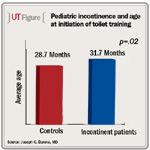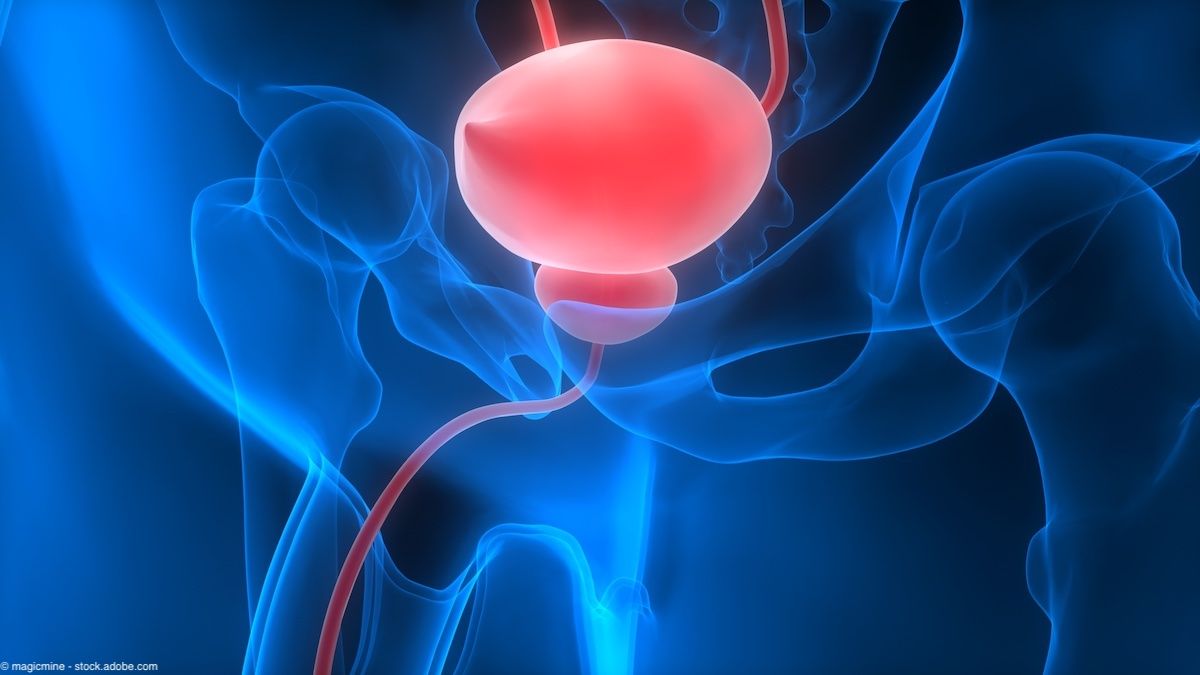Article
Toilet training more beneficial when started early
Author(s):
In children who show signs of readiness, toilet training is best initiated between the ages of 27 and 32 months.

Key Points
New Brunswick, NJ-In children who show signs of readiness, toilet training is best initiated between the ages of 27 and 32 months, say researchers from Robert Wood Johnson Medical School, New Brunswick, NJ.

The researchers' conclusions are based on a case-control study of 215 patients published in the Journal of Pediatric Urology (2009; 5:458-61). Cases consisted of 58 children ages 4 to 12 years who presented for pediatric urology consultation for urge incontinence. Controls consisted of 157 children who were recruited from a general pediatric practice in the same geographic area. Controls were healthy and did not have a history of urge incontinence.
"I was aware of some of the recent literature suggesting that the incidences of day wetting and late toilet training are both increasing," said Dr. Barone, chief of urology at Robert Wood Johnson Medical School. "I wondered if the two might be related."

Acknowledging the possibility of recall error among parents, Dr. Barone and colleagues found that the mean age at which children began toilet training was 31.7 months among cases and 28.7 months among controls, a statistically significant difference (p=.02).
Parents were also asked to identify the method by which they had conducted toilet training. The options were a child-oriented approach, in which training was initiated when the child appeared to be ready and willing to train, and a parent-centered approach, in which training began when the parent was ready. In some cases, both methods were used.
Questionnaire data revealed that 50% and 56.1% of cases and controls, respectively, were trained with the parent-oriented method. The child-oriented approach was reported in 29.3% of cases and 34.4% of controls, while the mixed approach was used in 15.5% of cases and 7% of controls.
Data analysis showed no statistically significant difference in the method of toilet training used between the two cohorts and therefore no association between urge incontinence and training method.
Still, the issue of when training should be initiated was enough to catch Dr. Barone's eye.
"I was surprised," he said.
"I have always been a proponent of the child-oriented approach to training, telling parents not to rush training and to let their child be the guide. I thought that starting a child 'too soon' would more likely result in day wetting compared with waiting and starting the training process later. Our data indicate this may not be the case."
Incontinence an 'issue of control'
As to why those children who toilet train later would be more prone to urge incontinence, Dr. Barone believes it may be an issue of control on the child's part.
"The older toddler knows how to control the situation and is perfectly willing to exert that control," Dr. Barone explained. "The older toddler may also be quite happy with the way things are, so getting them to train and change could be challenging. They may be quite content in a diaper.
"Younger children tend to be more willing participants and are not so set in their ways. This may make training the younger child easier."
The authors concluded that toilet training should be initiated prior to the age of 32 months in "children who display signs of toilet-training readiness." Those signs, Dr. Barone noted, include:














